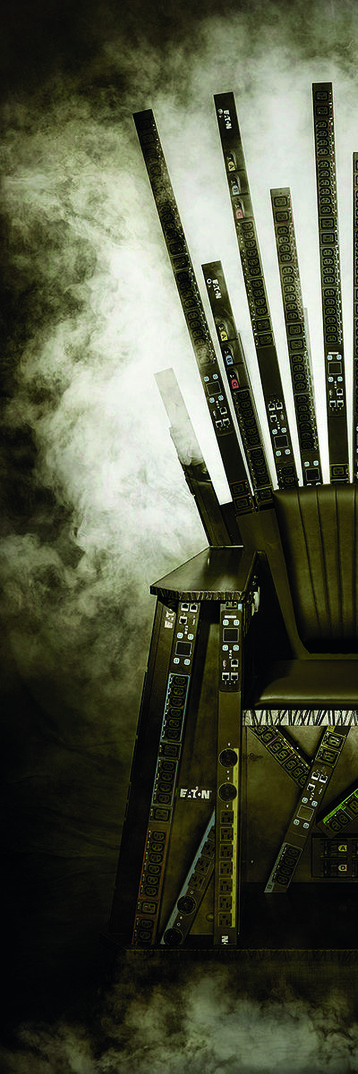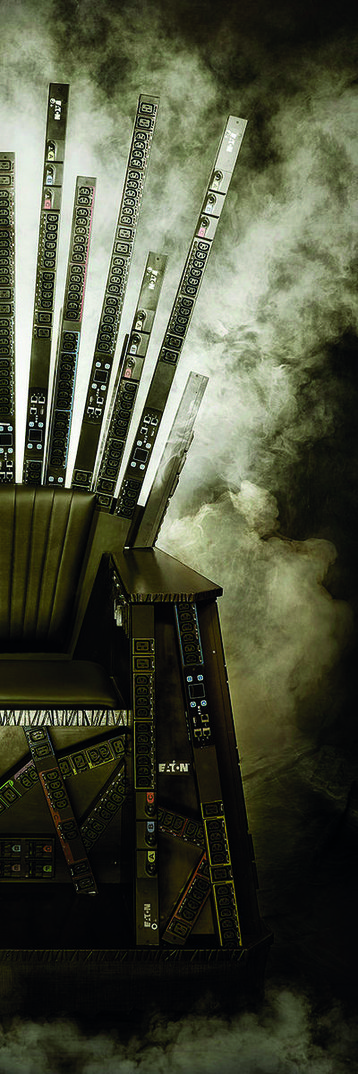The Open Compute Project (OCP) was supposed to spell doomsday for power distribution units (PDUs). The Facebook-backed project proposed a DC power distribution system with no PDU in the rack. But the power industry, it seems, is not concerned.
Facebook started the OCP in 2011, planning to spread the use of no-frills customized data center hardware beyond its own webscale facilities to the enterprise.
The challenge of the bus bar
Large users like Facebook and Google with giant monolithic data centers can afford to have hardware built to their own specifications, dismissing “vanity” features such as badges and cases and using other short cuts.
Through OCP, Facebook shared this approach, and its hardware specifications, as open source, so any organization can use them, including general purpose data centers, run by enterprises and outsourcers.
Ideas within OCP included server designs and switches, but its attack on the fundamentals of data center building created a stir.
Among OCP’s flagship ideas is the Open Rack, a wider than usual 23-inch rack that distributes DC power through a live “bus bar” at the back. This would have no traditional PDU. Other ideas followed, including a normal-sized Open19 19-inch rack from LinkedIn, also powered from a bus bar.
It’s immediately obvious that the DC bus bar in the Open Rack and Open19 specifications replaces the power distribution unit or PDU, which delivers AC power through metered outlets in the rack. If OCP took over, said some commentators, it spelled the end of the PDU.
PDU vendors take a more long-term view than that. First of all, the attention given to OCP is out of proportion to its actual market size.
Don’t panic
Even if bus bars take off, this is just another step in the evolution of the industry, said Gordon Hutchison, vice president of international operations at Geist: “The OCP approach is relatively new, and may not be embraced by the entire industry. It still requires power distribution, it just changes the nature of it.”
In fact, OCP has actually solicited and shared power distribution devices, according to Hutchison’s colleague Brad Wilson, president of Geist Global: “These were PDUs in every sense of the word. They have a normal PDU form factor, but just didn’t use the connectors we are used to seeing. They had a mix of AC and DC.”
Those systems are designed to be easier to customize, and predate the Open Rack with its bus bar, which Wilson says is more of a “radical departure.” DC power is distributed directly to servers and other equipment in the rack.
In fact, OCP has also solicited and shared devices which are PDUs in every sense of the word
This is more efficient for large homogeneous installations, where every item in the rack is made specially for a customer like Facebook or Google, but very few organizations are built that way. Amazon also works this way, but is bigger still, and able to make its own specifications and keep them hidden.
The people going with Open Rack are the giants who are webscale to an absurd degree - and they still make up a very small proportion of the total racks in the world, vendors told DCD. In enterprise data centers, or even cloud providers, the equipment is heterogeneous, and much of it has to be bought off the shelf.
“Not all customers are made alike,” said Henry Hsu, vice president of product management at Raritan. “Today, very few of them have the kind of homogeneous data center, made up of standard compute and storage units, that can make use of architectures like Open Rack.”
It’s tough to estimate, and no vendors could provide a figure, but it seems only a tiny minority, a few percent at most, use bus bars.
Customer response
Plenty of customers have kicked the tires of the concept, coming along to conferences, or even commissioning bus bar based installations. But in the enterprise these are more or less test rigs. They have a power shelf to convert between AC and DC, and the customer probably ends up with only one or two cabinets.
In these situations, AC power distribution is cheaper because of the economy of scale. A bus bar in itself is a solid piece of metal, and it is expensive to retool individual equipment to work with it.
Ironically, while the power connectors in conventional power distribution systems are totally standard, the connectors for the bus bar can turn out to be available from a small number of vendors, say PDU players. “As OCP has rolled on, a lot of proprietariness has crept in,” one vendor commented.
OCP Open Rack would be a very very long slow bandwagon for everyone to jump on
Brad Wilson, Geist
Even where the connectors are standard, the fact that they are not so widely used as normal power sockets can be a drawback. Some of these designs may be produced by people from outside the PDU industry. They can be radically different, but might fall down on issues including manufacturability, adding costs and potential incompatibilities, vendors warned. If they don’t work first time, there can be fingerpointing by the different vendors involved.
Conventional PDUs have standards from ANSI, IEC and ISO, which are created by people literally spending 15 years around a table agreeing on them. The downside is that 15 year delay, but the upside is the standards are completely solid.
By contrast, OCP and Open19 are “structured more like Wikipedia,” PDU vendors said. They can be modified and evolved, and aren’t locked down. This gives flexibility, but can be risky, unless you are a giant player. It’s notable that cloud player Microsoft has also offered hardware through the Open Compute Project, but its Orion project uses AC power, not a bus bar, and has a PDU-like structure. And even this will take a significant investment. Microsoft will be approaching white-label equipment makers, and asking them to meet a specification, but this is not simple.
The cabinet is the new blade server
This is an interesting concept, and Wilson sees the industry moving to a world where “the cabinet is the new blade server.”
Servers in 1U or 2U of space share power and network, much like vertically mounted servers in the proprietary blade server systems which emerged in the 1990s. A scheme like that would require a new standard for power distribution.
A couple of years back, IHS analyst Sarah McElroy said it clearly: “The Open Compute Project is something that is peripheral to the rack PDU industry that may prompt more customers to request some level of customization in PDU products which will in turn motivate suppliers to offer more customization.”
It’s possible that as data center applications consolidate, and technology becomes more standardized and commoditized, more of the world’s data centers will evolve into the kind of monocultures which can be built with OCP hardware throughout.
But Wilson says that no matter the level of excitement around OCP hardware, it’s actually a long way from any sort of take over: “That would be a very very long slow bandwagon for everyone to jump on.”
This article appeared in the power supplement distributed with the April/May 2017 issue of DCD Magazine


